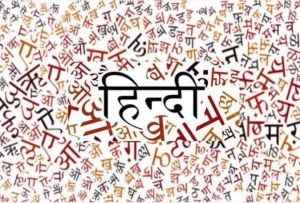Difference between revisions of "Language/Hindi/Vocabulary/Verb-“to-have-to”"
< Language | Hindi | Vocabulary
Jump to navigation
Jump to search
| Line 25: | Line 25: | ||
==Examples== | ==Examples== | ||
=== '''a) '''तुम्हें रेलवे स्टेशन जाना पड़ेगा । === | |||
You will have to go to the railway station. | |||
=== '''b) '''उसे अपनी जीविका चलाने के लिए गीत गाने पड़ते है । === | |||
She has to sing songs for her living. | |||
=== '''c)''' उसे स्टेशन पर अपने भाई का इन्तजार करना पड़ा । === | |||
He had to wait for his brother at the station. | |||
=== '''d)''' तुम्हें अपने पिता की सहायता करनी है । === | |||
You have to help your father. | |||
Revision as of 09:18, 9 October 2021
Verb “to have to” in Hindi
Rule
The verb “to have to” or “must” is rendered in three different ways in Hindi:
- Tum ko jānā paṛegā?,
- Tum ko jānā hai? or
- Tum ko jānā cāhi(y)e?
However, each of these sentences reflects a particular situation.
- The first sentence implies that there is an obligation from a third party,
- the second includes a temporal factor, i.e. that the obligation will take place in the future,
- and only the third one is of general nature.
Examples
a) तुम्हें रेलवे स्टेशन जाना पड़ेगा ।
You will have to go to the railway station.
b) उसे अपनी जीविका चलाने के लिए गीत गाने पड़ते है ।
She has to sing songs for her living.
c) उसे स्टेशन पर अपने भाई का इन्तजार करना पड़ा ।
He had to wait for his brother at the station.
d) तुम्हें अपने पिता की सहायता करनी है ।
You have to help your father.
